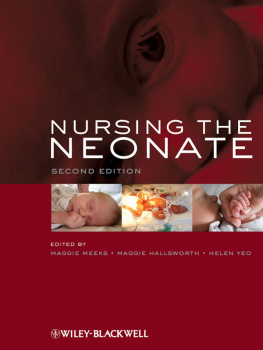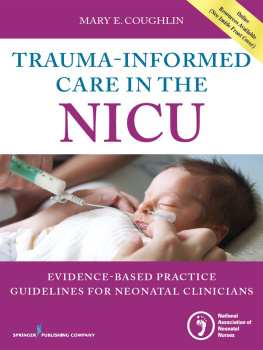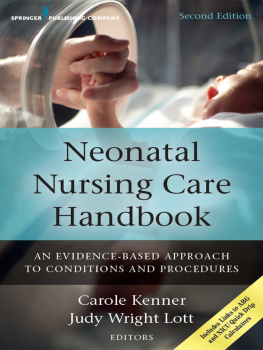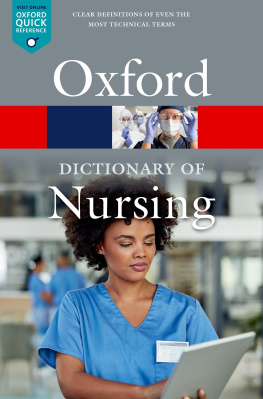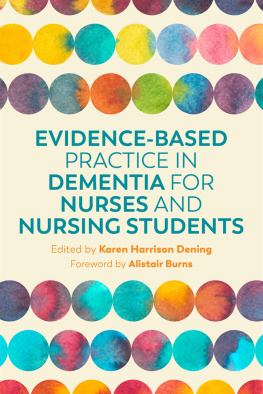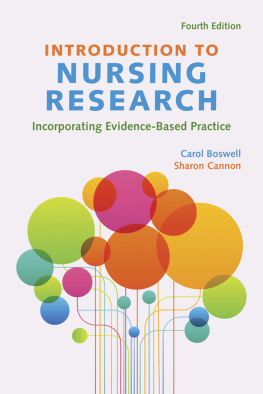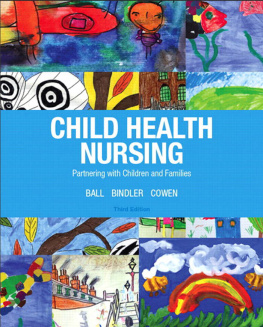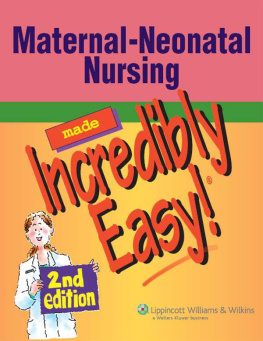
CONTENTS

This edition first published 2010
First edition published 1998
1998, 2010 by Blackwell Publishing Ltd
Blackwell Publishing was acquired by John Wiley & Sons in February 2007. Blackwells publishing programme has been merged with Wileys global Scientific, Technical, and Medical business to form Wiley-Blackwell.
Registered office
John Wiley & Sons Ltd, The Atrium, Southern Gate, Chichester, West Sussex, P019 8SQ, United Kingdom
Editorial office
2121 State Avenue, Ames, Iowa 50014-8300, USA
For details of our global editorial offices, for customer services and for information about how to apply for permission to reuse the copyright material in this book please see our website at www.wiley.com/wiley-blackwell .
The right of the author to be identified as the author of this work has been asserted in accordance with the Copyright, Designs and Patents Act 1988.
All rights reserved. No part of this publication may be reproduced, stored in a retrieval system, or transmitted, in any form or by any means, electronic, mechanical, photocopying, recording or otherwise, except as permitted by the UK Copyright, Designs and Patents Act 1988, without the prior permission of the publisher.
Wiley also publishes its books in a variety of electronic formats. Some content that appears in print may not be available in electronic books.
Designations used by companies to distinguish their products are often claimed as trademarks. All brand names and product names used in this book are trade names, service marks, trademarks or registered trademarks of their respective owners. The publisher is not associated with any product or vendor mentioned in this book. This publication is designed to provide accurate and authoritative information in regard to the subject matter covered. It is sold on the understanding that the publisher is not engaged in rendering professional services. If professional advice or other expert assistance is required, the services of a competent professional should be sought.
Library of Congress Cataloging-in-Publication Data
Nursing the neonate. 2nd ed. / edited by Maggie Meeks, Maggie Hallsworth.
p. ; cm.
Includes bibliographical references and index.
ISBN 978-1-4051-4974-7 (pbk.: alk. paper)
1. Neonatal intensive care. 2. Newborn infantsCare. 3. Newborn infantsDiseasesNursing. I. Meeks, Maggie. II. Hallsworth, Maggie.
[DNLM: 1. Neonatal Nursing. 2. Infant, Newborn, Diseasesnursing. WY 157.3 N9745 2010]
RJ253.5.N87 2010
618.9201dc22
2009012289
A catalogue record for this book is available from the British Library.
1 2010
PREFACE
We were delighted to be asked to produce a new edition of Helen Yeos classic text and called upon many of our ex and current colleagues (as well as some people that we have yet to meet) to help us do this. Neonatology continues to expand as a stimulating and emotionally challenging area of medicine and nursing. The commitment of all staff working on a neonatal unit is palpable and we both feel privileged that we have been involved in this speciality.
Our intention is that this text is considered essential reading for neonatal nurses and midwives caring for sick newborn infants. It is also intended to be a valuable resource for junior medical staff, tutors of neonatal and paediatric courses and other health care professionals working within this specialised area of practice. This edition aims to encourage the linking of theory to practice and facilitate the development of knowledge and skills that will continue to challenge and advance management strategies in the care of these infants.
A combined medical and nursing team approach has been used in order to produce an evidenced based text that will be of use for all those caring for sick newborn infants. We hope that this approach will facilitate each health care professional undertaking their own role to have an insight into the individual roles of the other professionals, and of course the parents. By working together in this way a team approach to the care of the infant will be encouraged and our mutual aims of achieving the best outcome for each individual infant on the neonatal unit will be realised.
This edition has been divided into chapters covering body systems, and of course some overlap between chapters is inevitable due to the complexities of the infants conditions. Each chapter contains implications for practice which may be used as a quick information resource to reinforce the chapter content. It would be impossible to cover every condition that may be encountered on the neonatal unit and we have made no attempt to do this but we hope we have covered those most frequently seen.
We would like to personally thank the authors who contributed, all of whom are very busy clinical staff, and thank many other clinical colleagues who contributed with stimulating discussions and proof reading for medical content. We are also indebted to Chris Jarvis for her editing comments on the nutrition chapter and Patrick McNamara for his very helpful suggestions about the haemodynamically significant duct. And finally, although we had both written chapters before this is our first foray into editing and if our husbands have anything to do with it, it may be our last!
Maggie Meeks
Maggie Hallsworth
INTRODUCTION
When asked, I readily agreed to write a few words of introduction to this edition. Having worked in neonatal nursing for over 20 years I have had the privilege of working alongside both editors during the past five years. I can only admire the depth (and breadth) of their personal knowledge of neonatology and their ability to impart that knowledge to nursing, midwifery and medical colleagues in both the clinical and classroom setting. They have always believed in the value of multidisciplinary education and it is an approach they have used with much success. This philosophy is reflected in the combined medical and nursing approach to the text.
The editors have many years of experience teaching and working alongside medical, nursing and midwifery colleagues and know, first hand, the challenges we face on a daily basis. They understand the imperative of delivering a book which does not provide theory in isolation, but links directly to practice. The learning outcomes identified at the beginning of each chapter and the implications for practice points highlighted throughout the text ensure that this emphasis persists throughout the whole of the book.
Although both editors have now moved on to work elsewhere within neonates I look forward to being able to use this text to continue their legacy of a multidisciplinary approach to education that links theory to practice and translates into clinical care of a high standard. I can only reiterate the belief that evidence based, team approach to neonatal care is fundamental to achieving the best outcomes for babies and their families and continuing to improve standards in neonatal care.
Judith Foxon
Modern Matron
Neonatal Unit
University Hospitals of Leicester NHS Trust
CONTRIBUTORS
ADAPT (All Dependent And PreTerm)
ADAPT is a support charity for the parents and families of premature and poorly babies needing specialist neonatal care. This support is offered to families while their baby is on the unit and continued once they go home for as long as is necessary. ADAPT was established in 1995 by Rob and Fiona Morris whose son Harry was on the neonatal unit in Leicester for nine months. The organisation now employs four part time workers and runs special In-B-Tweenie groups for new mums around Leicestershire.
Next page
